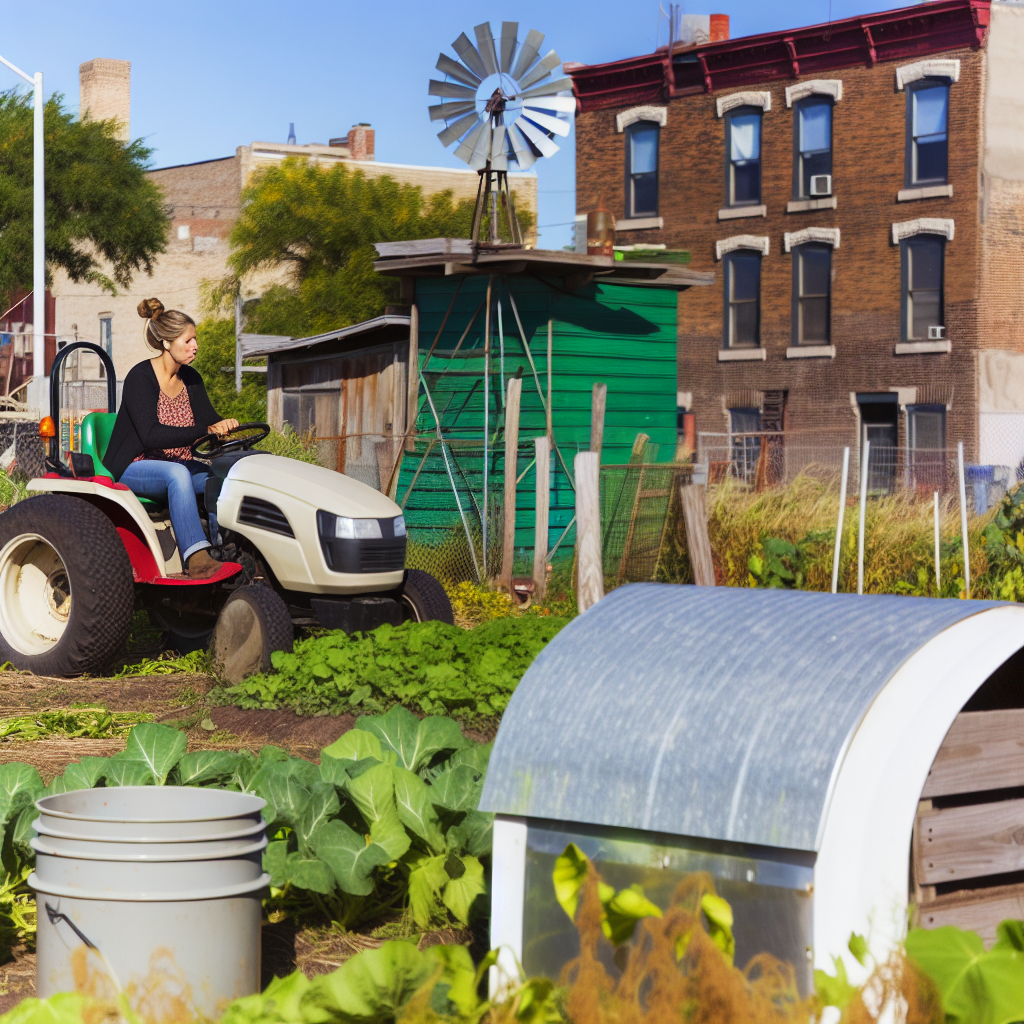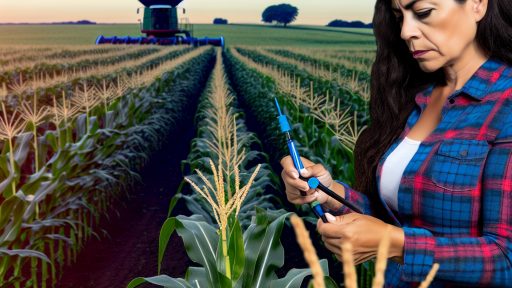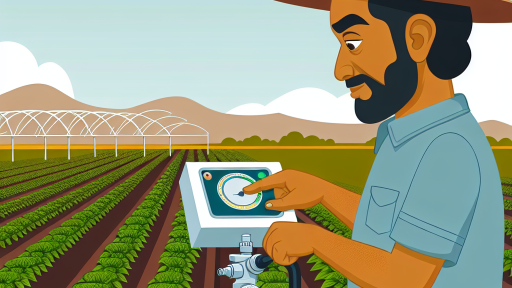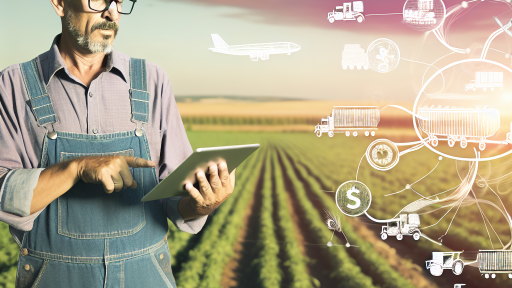Introduction to Vertical Farming
Definition of Vertical Farming
Vertical farming refers to the practice of growing crops in vertically stacked layers.
This method often incorporates controlled-environment agriculture techniques.
It maximizes space and resource efficiency in urban settings.
Importance of Vertical Farming
Vertical farming addresses food security in growing urban populations.
It reduces the need for transportation by producing food close to consumers.
This practice also minimizes water usage compared to traditional farming.
Furthermore, it reduces the use of harmful pesticides and fertilizers.
By utilizing advanced technology, vertical farming can increase yield per square foot.
In addition, it contributes to the reduction of carbon footprints in cities.
Environmental Benefits
Vertical farming promotes sustainable agricultural practices.
It uses renewable energy sources, such as solar panels, in many designs.
This innovation decreases the reliance on fossil fuels.
Economic Impact
This farming method encourages local job creation in urban areas.
It enables farmers to cater to niche markets with fresh produce.
Moreover, it stimulates investment in agricultural technologies.
Transform Your Agribusiness
Unlock your farm's potential with expert advice tailored to your needs. Get actionable steps that drive real results.
Get StartedChallenges to Consider
Despite the benefits, vertical farming faces certain challenges.
High initial startup costs can be a significant barrier for newcomers.
Additionally, energy consumption for lighting and climate control is a concern.
Lastly, maintaining a consistent food supply can be difficult without adequate infrastructure.
Key Technologies in Vertical Farming
Hydroponics
Hydroponics uses nutrient-rich water instead of soil to grow plants.
This method maximizes space and increases crop yield.
Furthermore, it allows precise control of nutrients and pH levels.
Thus, farmers can cultivate a variety of crops year-round.
Hydroponics eliminates soil-borne diseases, reducing the need for pesticides.
Additionally, this technique uses up to 90% less water than traditional farming.
Aeroponics
Aeroponics involves growing plants in a mist environment, without soil or water.
This system provides plants with nutrient-rich mist at regular intervals.
Consequently, plants can absorb oxygen and nutrients more efficiently.
Aeroponics also requires less space compared to conventional farming methods.
Moreover, it encourages faster plant growth and higher yields.
This technology significantly reduces water usage and fertilizer waste.
Aquaponics
Aquaponics combines aquaculture with hydroponics in a symbiotic environment.
Fish waste provides organic nutrients for the plants, while plants filter water for fish.
This closed-loop system fosters sustainability and minimizes resource waste.
Aquaponics can produce fish and vegetables simultaneously, enhancing food security.
Additionally, it supports biodiversity and healthier ecosystems.
This innovative approach also requires significantly less water than traditional methods.
Impacts of Technological Advances
These technologies represent a shift towards sustainable urban agriculture.
They pave the way for innovative food production solutions.
Showcase Your Farming Business
Publish your professional farming services profile on our blog for a one-time fee of $200 and reach a dedicated audience of farmers and agribusiness owners.
Publish Your ProfileAs cities grow, vertical farming offers a pathway to food security.
Thus, investing in these technologies can yield significant social and environmental benefits.
Role of Artificial Intelligence in Vertical Farming
Enhancing Automation
Artificial intelligence significantly boosts automation within vertical farms.
It streamlines operations by managing planting, watering, and harvesting.
This automation reduces the need for manual labor, lowering costs.
As a result, farms can operate more efficiently and at scale.
Data Collection and Analysis
AI systems continuously collect vast amounts of data.
This data includes environmental conditions, plant growth rates, and resource usage.
By analyzing this information, AI identifies optimal growing conditions.
Furthermore, it predicts crop yields and suggests adjustments to management practices.
Optimizing Resource Use
Efficient resource management is crucial in urban agriculture.
AI technologies help optimize water and nutrient delivery systems.
For instance, sensors monitor moisture levels and adjust irrigation accordingly.
This precision leads to substantial reductions in water waste and costs.
Predictive Maintenance
Preventative care is essential for maintaining equipment reliability.
AI can predict when machines are likely to fail or require maintenance.
This capability minimizes downtime and extends the lifespan of equipment.
As a result, operations can run smoothly without unexpected interruptions.
Integration of AI with IoT
The Internet of Things (IoT) works in tandem with AI technologies.
IoT devices gather real-time data from the farm environment.
AI analyzes this data to inform decisions and automate processes.
This synergy enhances overall farm efficiency and productivity.
Facilitating Decision-Making
AI aids farmers in making informed business decisions.
It provides insights on market trends and consumer preferences.
This information influences planning, planting, and selling strategies.
Consequently, farmers can adapt quickly to changing market conditions.
Explore Further: Automated Machinery And Its Impact On Farm Productivity
Energy-efficient Lighting Solutions: LED Technology and Its Benefits
Introduction to LED Technology
LED technology has transformed the way we approach urban agriculture.
This innovative lighting solution supports plant growth in vertical farms.
It is crucial for enhancing sustainability in urban settings.
Energy Efficiency of LEDs
LEDs consume significantly less energy than traditional lighting.
They also produce less heat, reducing cooling costs.
This efficiency leads to lower energy bills for urban farms.
Consequently, growers can focus more on maximizing their crop yields.
Long Lifespan of LED Lights
LED lights have an impressive lifespan compared to other options.
Many last for over 25,000 hours of use.
This longevity reduces maintenance and replacement costs.
Farmers enjoy less downtime between bulb changes.
Customizable Light Spectra
Another benefit of LED technology is customizable light spectra.
Different plants thrive under various light conditions.
Showcase Your Farming Business
Publish your professional farming services profile on our blog for a one-time fee of $200 and reach a dedicated audience of farmers and agribusiness owners.
Publish Your ProfileWith LEDs, growers can adjust wavelengths for optimal growth.
This adaptability enhances the quality and quantity of yield.
Reduction of Carbon Footprint
Switching to LED lighting considerably lowers greenhouse gas emissions.
This shift aligns with efforts to combat climate change.
Urban farms contribute to reducing overall urban carbon footprints.
Case Studies and Examples
Many urban farms have successfully implemented LED technologies.
The Green Roof Project in Chicago showcases this innovation.
The farm reports improved crop yields and lower energy costs.
Additionally, Urban Sprout in San Francisco highlights similar successes.
These examples serve as inspiration for new urban agriculture ventures.
Future Trends in LED Technology for Farming
As technology advances, LED lighting will continue to improve.
Future developments may focus on even greater efficiency.
Smart lighting solutions will integrate with IoT technologies.
This integration will optimize growth cycles more effectively.
Urban agriculture will benefit significantly from these advancements.
Delve into the Subject: Wind Energy Applications to Enhance Farm Productivity
Climate Control Systems in Vertical Farms: Maintaining Optimal Growing Conditions
Importance of Climate Control
Climate control systems play a crucial role in vertical farming.
They create ideal growing conditions for crops within urban environments.
Effective climate control enhances crop yield and quality.
Key Components of Climate Control Systems
Temperature regulation is fundamental to plant health.
Vertical farms utilize advanced heating and cooling systems.
These systems ensure optimal temperatures throughout the year.
Humidity management helps maintain consistent moisture levels.
Dehumidifiers and humidifiers work together to stabilize air moisture.
This balance promotes healthy growth and reduces disease risk.
Carbon dioxide enrichment increases photosynthesis rates.
Farmers monitor CO2 levels to maximize crop productivity.
Strategic CO2 application leads to robust plant growth.
Technologies Enhancing Climate Control
Smart sensors monitor environmental variables continuously.
These sensors provide real-time data on temperature, humidity, and CO2 levels.
Automated systems adjust conditions according to plant needs.
Data analytics plays a significant role in optimizing climate control.
By analyzing trends, farmers can make informed decisions.
This leads to better resource management and reduced energy costs.
Benefits of Efficient Climate Control
Efficient climate control systems enhance sustainability in vertical farming.
They reduce reliance on external agricultural inputs.
Moreover, they lower water and energy consumption.
Healthy plants contribute to higher food security in urban areas.
Ultimately, crop resilience improves due to consistent growing conditions.
This ensures a steady supply of fresh produce for local markets.
Showcase Your Farming Business
Publish your professional farming services profile on our blog for a one-time fee of $200 and reach a dedicated audience of farmers and agribusiness owners.
Publish Your ProfileSee Related Content: Automated Machinery Streamlining Sustainable Farming Techniques
Sustainable Resource Management: Water Recycling and Nutrient Optimization
Importance of Water Recycling
Water recycling plays a crucial role in vertical farming.
This practice reduces the overall water usage significantly.
Moreover, it ensures that water remains available for other uses.
Vertical farms employ advanced filtration systems to reclaim water.
These systems improve efficiency and protect the environment.
Technologies for Water Management
Several technologies enhance water recycling in vertical farms.
Hydroponics systems utilize a closed-loop process for water use.
Aeroponics mist plants with a nutrient-rich solution.
Both methods save water compared to traditional farming techniques.
Additionally, rainwater harvesting systems collect and store water.
Nutrient Optimization Strategies
Nutrient optimization ensures plants receive essential resources.
Vertical farms use nutrient film techniques to deliver precise amounts.
This method minimizes chemical runoff into the environment.
Furthermore, sensors monitor nutrient levels in real-time.
Adjustments can be made quickly to maintain optimal growth conditions.
Benefits of Sustainable Practices
Implementing water recycling and nutrient optimization provides many advantages.
These practices reduce overall operational costs for urban farmers.
They also lower the environmental impact of farming.
Consequently, sustainable resource management enhances food security.
As a result, urban areas can grow more food locally.
Find Out More: How Biotechnology Enhances Nutritional Value Of Crops

Impact of Vertical Farming on Urban Food Security and Local Economies
Enhancing Food Security
Vertical farming plays a crucial role in enhancing urban food security.
These systems utilize space efficiently in densely populated cities.
They enable communities to grow food near consumption sites.
As a result, transportation costs and emissions decrease significantly.
Vertical farms can provide fresh produce year-round, regardless of climate.
Thus, they help to stabilize food supplies in urban areas.
Boosting Local Economies
Vertical farming generates new job opportunities in urban areas.
These farms require skilled workers for system maintenance and operations.
Moreover, they can stimulate local economies through direct sales.
Local farmers’ markets can feature produce grown in vertical farms.
This direct connection strengthens community relationships.
Economic growth emerges from increased consumer spending on local food.
Supporting Sustainable Practices
Vertical farming aligns with sustainability goals for urban environments.
These farming systems reduce water usage compared to traditional methods.
They often incorporate recycling systems for water and nutrients.
Additionally, they minimize land use and urban sprawl.
Community involvement in urban farming promotes environmental awareness.
Ultimately, this innovation encourages a shift towards local food ecosystems.
Showcase Your Farming Business
Publish your professional farming services profile on our blog for a one-time fee of $200 and reach a dedicated audience of farmers and agribusiness owners.
Publish Your ProfileCase Studies: Successful Vertical Farming Projects Worldwide
Sky Greens in Singapore
Sky Greens is an innovative vertical farm located in Singapore.
It employs a unique rotating vertical system for efficient farming.
This technology significantly increases crop yield in limited space.
Moreover, it reduces water usage by up to 90% compared to traditional methods.
Sky Greens primarily grows leafy greens and herbs.
Local restaurants and grocery stores benefit from their fresh produce.
Additionally, it contributes to the local economy by creating jobs.
Aerofarms in Newark, New Jersey
Aerofarms operates one of the largest indoor vertical farms in Newark.
The facility uses aeroponic technology to cultivate crops without soil.
This method enhances growth rates by delivering nutrients directly to plants.
Aerofarms focuses on growing kale, arugula, and other leafy greens.
They provide fresh produce to local communities and supermarkets.
Furthermore, Aerofarms research advances vertical farming methodologies.
Bowery Farming in New York City
Bowery Farming utilizes cutting-edge technology in New York City.
They employ a fully automated indoor farming system.
This ensures efficient resource use and optimal growing conditions.
Bowery grows a variety of greens, including lettuce and herbs.
Their products are pesticide-free and sustainably grown.
Bowery also emphasizes transparency in their farming practices.
Consumers can access information about the product’s origin.
Oishii in New Jersey
Oishii specializes in cultivating gourmet strawberries using vertical farming.
Their unique growing method creates optimal flavor and quality.
Oishii employs a controlled environment to enhance sweetness and aroma.
The farm uses biodegradable packaging to promote sustainability.
Furthermore, their strawberries have garnered acclaim from chefs nationwide.
Oishii exemplifies how vertical farming can enhance specialty crops.
Vertical Harvest in Jackson, Wyoming
Vertical Harvest has established a unique farm in Jackson, Wyoming.
It connects social impact with sustainable urban agriculture.
This farm employs individuals with disabilities, providing meaningful jobs.
They grow a variety of produce, including tomatoes and greens.
Vertical Harvest demonstrates the power of inclusivity in agriculture.
Additionally, they supply local markets, enhancing food accessibility.
Future Trends in Vertical Farming Technologies
Innovations in Vertical Farming
Vertical farming harnesses new technologies to enhance crop productivity.
LED lighting systems allow for optimal light delivery with reduced energy consumption.
Hydroponics and aeroponics minimize water use while maximizing plant growth.
Automated systems increase efficiency in planting, maintaining, and harvesting crops.
Robotics play a role in streamlining operations and reducing labor costs.
Data analytics enables farmers to monitor plant health and predict yields accurately.
Market Potential for Vertical Farming
The demand for local produce continues to increase across urban areas.
Vertical farms can supply fresh vegetables while reducing transportation emissions.
Showcase Your Farming Business
Publish your professional farming services profile on our blog for a one-time fee of $200 and reach a dedicated audience of farmers and agribusiness owners.
Publish Your ProfileGovernments support vertical farming initiatives with grants and subsidies.
Investors are increasingly interested in sustainable agriculture solutions.
Market research indicates promising growth in the vertical farming sector.
Challenges and Solutions
High initial setup costs pose a significant barrier for many startups.
However, technological advancements are gradually reducing these costs.
Integration into existing urban infrastructure can be complex.
Collaboration with city planners can facilitate smoother implementation.
Addressing energy consumption concerns is crucial for sustainability.
Using renewable energy sources can mitigate this issue effectively.
Future Directions
Research and development will continue to drive the industry forward.
Biotechnology may enhance plant genetics for improved yields and disease resistance.
Integration of artificial intelligence can optimize farming practices significantly.
Digital platforms for community engagement will further promote local eating habits.
Additional Resources
Future food-production systems: vertical farming and controlled …
A review on urban agriculture: technology, socio-economy, and policy




